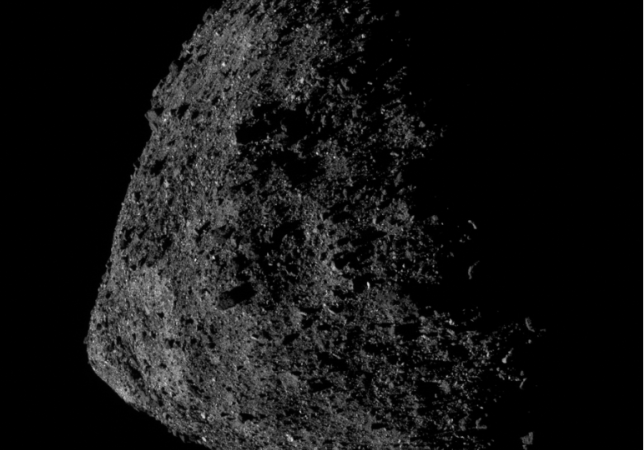Nasa has revealed its final plans to land a probe on a huge space rock nicknamed the ‘apocalypse asteroid’.
Source: Metro.com
Bennu is a 500 metre-wide monster which earned its nickname because there’s a very small chance of it hitting Earth in the 22nd century.
A spacecraft called OSIRIS-REx has been orbiting the object for one year.
Now Nasa has decided where it will land, scoop up a sample and return it to Earth.
Four candidate sites dubbed Sandpiper, Osprey, Kingfisher, and Nightingale were chosen for investigation because they ‘pose the fewest hazards to the spacecraft’s safety while still providing the opportunity for great samples to be gathered’.
‘After thoroughly evaluating all four candidate sites, we made our final decision based on which site has the greatest amount of fine-grained material and how easily the spacecraft can access that material while keeping the spacecraft safe,’ said Dante Lauretta, OSIRIS-REx principal investigator at the University of Arizona in Tucson.
‘Of the four candidates, site Nightingale best meets these criteria and, ultimately, best ensures mission success.’
Nightingale is located on the north part of the space rock and is colder than the rest of its surface.
It’s a crater that’s thought to have been formed relatively recently, meaning Nasa should be able to gather a ‘pristine sample’ that gives it an ‘insight into Bennu’s history’.
The landing is fraught with danger, particularly because there’s a building-sized boulder lurking at the crater’s edge.
If this was to fall on the lander craft, it could destroy it and render the mission a disastrous failure.
‘Bennu has challenged OSIRIS-REx with extraordinarily rugged terrain,’ said Rich Burns, OSIRIS-REx project manager at Nasa’s Goddard Space Flight Center.
\’The team has adapted by employing a more accurate, though more complex, optical navigation technique to be able to get into these small areas.
‘We’ll also arm OSIRIS-REx with the capability to recognize if it is on course to touch a hazard within or adjacent to the site and wave-off before that happens.’
Bennu has a 1 in 2,700-chance of striking Earth between 2175 and 2199 – which is really very good odds so there’s probably no need to worry unduly for your great, great grandchildren’s safety.
Osiris-Rex arrived at Bennu in early December and will try to collect samples of the rock in 2020 and attempt to return them to Earth.
It’s also believed Bennu may contain the building blocks of life, so recovering a sample will allow scientists to test a theory that asteroids carried vital chemical to earth which sparked the genesis of living organisms.
But the behemoth could also bring death on a gigantic scale, so the tests will also help to understand our nemesis and how to make sure it doesn’t hit us.
If a disastrous impact came to pass, it would release more energy than all the nuclear weapons detonated in the entirety of human history.
Bennu is as wide as five football fields and weighs around 79 billion kilograms, which is 1,664 times heavier than the Titanic.
Source: Metro.com

































Leave a Comment
You must be logged in to post a comment.